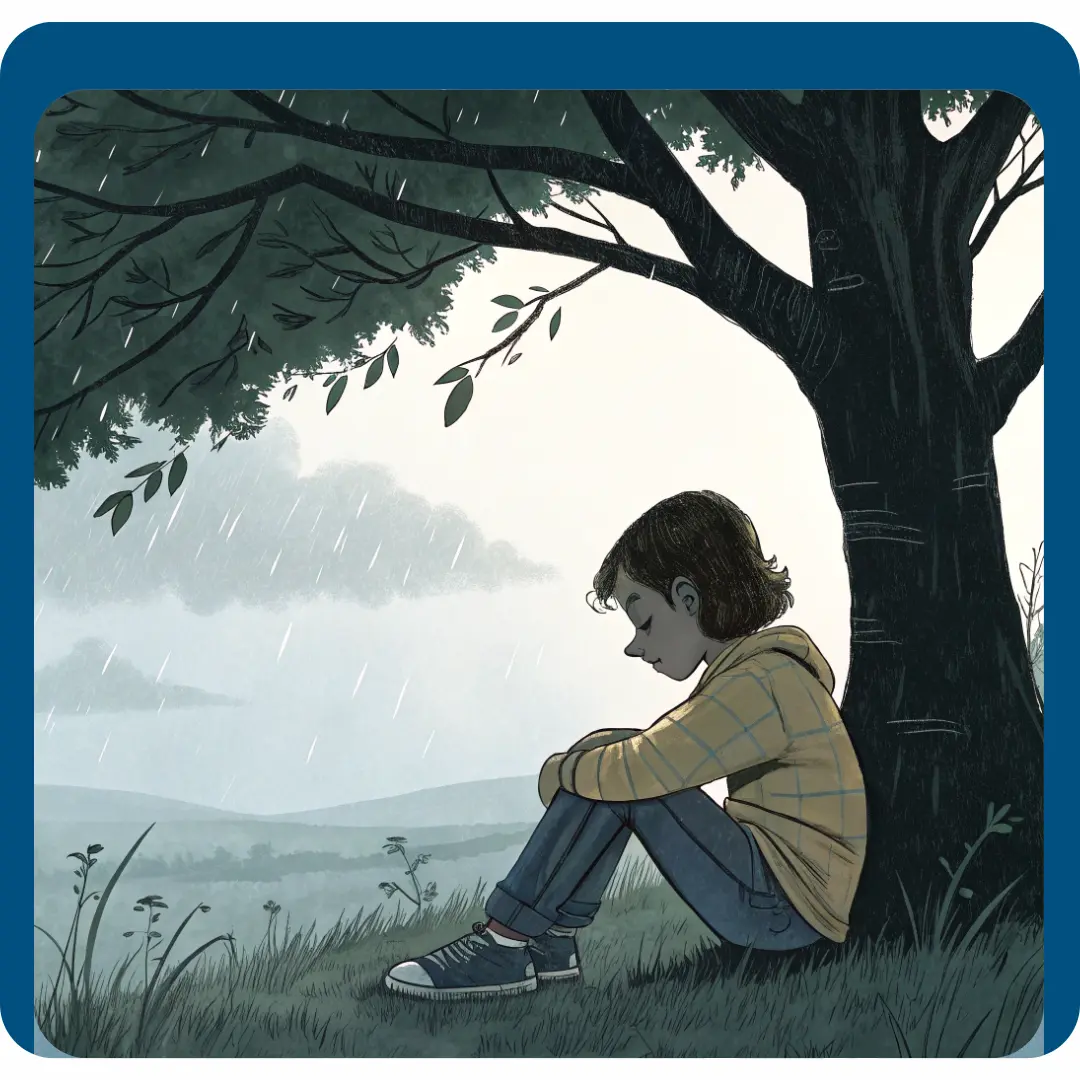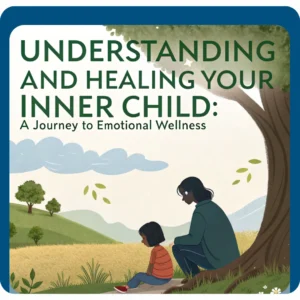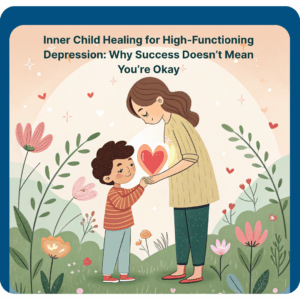Understanding the Impact of Childhood Trauma
Introduction
Childhood trauma in its various forms can have profound and lasting effects on a child’s development and well-being. From neglect to toxic relationships with caregivers, these early experiences shape how individuals perceive themselves and interact with the world. In this blog post, we will delve into the different types of childhood trauma, their impact on development, and the importance of recognizing and addressing these issues for the well-being of individuals and society.
Table of Contents
Types and Categories
Neglect: The Invisible Wound
Neglect is a form of childhood trauma that often goes unnoticed but can have devastating consequences. When parents or caregivers fail to meet a child’s basic needs for safety, nourishment, and emotional support, it can leave lasting scars. Children who experience neglect may grow up feeling unloved, unworthy, and invisible. They may struggle with self-care and have difficulty forming healthy attachments with others. Chronic neglect, in particular, deeply impacts a child’s development, leading to severe long-term consequences such as low self-esteem, anxiety, depression, and difficulty trusting others.
Toxic Relationships with Caregivers
Toxic relationships with parents or caregivers contribute significantly to long-term emotional distress. Parents who are emotionally unavailable, critical, or abusive can undermine their child’s sense of self-worth and security. Children may internalize negative messages about themselves and develop maladaptive coping mechanisms to deal with the pain. As adults, they may continue to seek validation from others and struggle with feelings of inadequacy and unworthiness. These effects can manifest in various ways, including physical symptoms like headaches, stomachaches, and chronic pain.
The Global Perspective on Child Abuse and Neglect
Child abuse and neglect are global social problems affecting individuals and societies worldwide. Organizations like the International Society for the Prevention of Child Abuse and Neglect (ISPCAN) address prevention and treatment issues related to child abuse on a global scale. Resources like “Child Abuse: A Global Perspective” by Beth Schwartz-Kenney, Michelle McCauley, and Michelle Epstein provide extensive comparative analyses of child abuse across different countries, highlighting the nature of abuse and respective prevention and treatment responses.
Recognizing Different Forms of Child Abuse
Physical Abuse
Physical abuse involves intentional bodily harm inflicted on a child. It can result in injuries such as bruises, fractures, and internal damage. The long-term effects include chronic pain, physical disabilities, and emotional trauma.
Sexual Abuse
Sexual abuse encompasses any sexual activity with a child, including molestation, rape, and exploitation. Victims often suffer from severe psychological distress, including PTSD, anxiety, and depression.
Emotional Abuse
Emotional abuse involves consistent emotional or psychological harm inflicted within the caregiver-child relationship. It encompasses the failure to meet a child’s fundamental needs for attention, affection, consistency, and security. Emotional abuse can inflict profound and lasting harm, including cognitive challenges, mental health disorders, behavioral issues, and relationship difficulties.
Children raised by emotionally abusive parents often struggle to recognize the abuse since it’s their norm. They may blame themselves and feel unworthy of love or respect as they grow older. The adverse effects of emotional abuse include cognitive challenges, academic struggles, mental health disorders, substance misuse, behavioral issues, weight and appetite changes, sleep disturbances, unexplained physical ailments, career setbacks, and relationship difficulties.
Neglect
Neglect, as previously mentioned, is the failure to provide for a child’s basic needs. It is often overlooked but can have devastating long-term effects on a child’s physical, emotional, and psychological well-being.
Financial Abuse
Financial abuse within families, especially in developing countries like India, often goes unnoticed. Children forced to assume financial responsibilities prematurely can face long-lasting detrimental effects on their well-being and future prospects. This abuse can lead to a distorted sense of responsibility, trapping children in a cycle of economic dependence and limiting their potential for growth and success.
Bullying and Childhood Trauma
Bullying is another common issue that many children face. Whether physical, verbal, or emotional, bullying can leave victims feeling isolated, anxious, and unsafe. The relentless nature of bullying erodes a child’s self-esteem and confidence, making it challenging for them to trust others or form meaningful connections.
Financial Abuse and Its Long-Term Impact
Financial abuse within families, especially in developing countries like India, often goes unnoticed. Children forced to assume financial responsibilities prematurely can face long-lasting detrimental effects on their well-being and future prospects. This abuse can lead to a distorted sense of responsibility, trapping children in a cycle of economic dependence and limiting their potential for growth and success.
Symptoms and Signs of Abuse
Common Symptoms
- Anxiety
- Depression
- Low self-esteem
- Difficulty forming relationships
Uncommon Symptoms
- Chronic physical pain without medical cause
- Sleep disturbances
- Changes in appetite
Behavioral Indicators
- Withdrawal from social interactions
- Aggressive behavior
- Difficulty trusting others
Causes and Risk Factors of abuse
Biological Factors
- Genetic predisposition
- Neurodevelopmental disorders
Environmental Factors
- Family dynamics
- Socioeconomic status
- Community violence
Lifestyle Factors
- Substance abuse in the household
- Parental mental health issues
Diagnosis and Tests
Psychological Assessments
- Standardized questionnaires
- Clinical interviews
Medical Examinations
- Physical exams to rule out medical causes
- Developmental screenings
Behavioral Observations
- Observation in different settings
- Reports from teachers and caregivers
Treatment Options
Medical Treatments
- Medication for anxiety and depression
- Medical care for physical injuries
Therapies
Cognitive Behavioral Therapy (CBT)
CBT helps individuals reframe negative thought patterns and develop healthier coping mechanisms. It is effective in treating PTSD, anxiety, and depression resulting from childhood trauma.
Play Therapy
Play therapy allows children to express their emotions and experiences through play. It helps therapists understand the child’s needs and address trauma-related issues.
Family Constellation Therapy
This is non-intervening healing modality that works at a distance and without the direct involvement of the child. This therapy can be conducted by the parents or caregivers on behalf of the child to resolve issues of abuse, abandonment, illnesses and more.
Regression Therapy through Surrogacy
This is a powerful modality of regression using expert surrogates. It again doesn’t require direct involvement of the child. This can be conducted by the parents or caregivers. It safeguards the child from unnecessary exposure or reliving of the trauma. With the use of the surrogates, healing can be done for trauma or accidents that the child underwent.
Access Bars & Body Process
Access Bars and body process is another powerful way to heal the children of their fears, phobias, doubts, trauma and more. It requires light touch on the head or body for healing and removing negative thoughts, feelings and emotions affecting the child.
Theta Healing
This is a distance healing process which doesn’t require direct involvement of the child. It can be done at any distance and can be facilitated by the parents or caregivers.
Preventive Measures
Early Intervention Strategies
- Screening for signs of trauma in early childhood
- Providing resources for at-risk families
Education and Awareness Programs
- Training for educators and caregivers
- Public awareness campaigns
Support Systems for Parents and Caregivers
- Parenting classes
- Access to mental health services
Conclusion
Understanding the various forms of child abuse is crucial for early intervention and prevention efforts. By recognizing the signs and providing support, we can work towards creating safer environments for children to thrive. Addressing childhood trauma and toxic relationships requires raising awareness, implementing protective measures, and providing education and resources for affected children and families. By doing so, we can help individuals heal from their past and build healthier, more fulfilling lives.
—
Natasha Arora, Clinical Psychologist and Research Executive at Treta Foundation and Sonali Mittra, Director, Treta Foundation
FAQs
It is when a child undergoes scary, harmful, or overwhelming events like abuse, neglect, loss, or witnessing violence.
Yes. It can influence how you think, trust others, feel emotions, and even your physical health later in life.
Mood swings, shame, guilt, fear, being easily triggered, or feeling numb.
Childhood trauma can make it hard to trust, set boundaries, feel safe, or connect deeply with others.
Definitely. It increases risk of chronic illness, sleep issues, weakened immunity, and stress-related problems.
Yes. Problems focusing, memory issues, trouble learning new things are common effects.
Yes. Depression, anxiety, PTSD, eating disorders, substance use risk are higher among people with unhealed childhood trauma.
Yes. Many avoid intimacy, avoid emotional expression, or struggle to open up due to past hurt.
Yes. With therapy, support, healthy relationships, mindfulness, and self-work people can heal and live well.
Look for trauma-informed therapists, support groups, safe people to talk to, and possibly modalities like EMDR or somatic work.




This post on Childhood Trauma really touched my heart. It’s amazing how clearly you’ve explained its lasting impact and the path toward healing. More people need to read this!
Great post! It doesn’t just list harms—it explores healing and interventions, which felt hopeful. The trauma‑informed care tips were especially helpful.
This is one of the clearest explanations I’ve read on ACEs and long-term effects. The dose‑response concept really made the data click. Kudos!
I appreciated the balance of research and real-life examples. Covers not just mental health, but social and emotional aspects too. A very well-rounded blog!
Incredibly well‑researched and empathetic. Highlighting trauma‑informed care and therapy options is so needed. I’ll recommend this to my support groups!
As someone who’s walked this path, your words resonated deeply. The connection between stress systems and adult disorders really hit home. Bravo for normalizing these conversations.
Loved the section on resilience. Childhood trauma doesn’t define us, but knowing the science behind it gives hope. Thank you for sharing this deep insight.
Excellent breakdown of how “childhood trauma” affects physical health. The way the post links stress and inflammation stood out to me. A must‑read for anyone in mental health!
This article really doesn’t sugar‑coat things—“childhood trauma” truly shapes mental patterns. I appreciate how it dives into real-world impacts and solutions. Very informative!
Beautifully written and deeply informative. I love how you highlight neglect as “the invisible wound”—it’s often overlooked, yet so destructive. The section on financial abuse was also something I hadn’t considered before. It’s encouraging to see this conversation rooted in compassion, yet grounded in real-world consequences. This kind of writing makes a difference for survivors seeking validation.
Reading this post felt like someone finally put words to the silent struggles many of us carry. Your exploration of toxic caregiver relationships and the internalized messages that impact self‑worth resonated deeply. I appreciated how you explained both psychological and physical consequences—it’s not often that trauma’s ripple effects are laid out with such clarity. A powerful reminder that healing begins with recognition.
This article is incredibly insightful — the way you break down different types of childhood trauma (emotional abuse, neglect, bullying) is both thorough and compassionate. Seeing how these early experiences manifest in adult relationships and physical health really hit home for me. The connection to broader societal issues, like financial abuse in certain contexts, felt especially eye-opening. Thank you for this meaningful resource!
Your exploration of childhood trauma as a multi-dimensional experience (emotional, physical, financial) felt transformative. I loved how the article combined global perspective on ACEs with cultural context. The focus on resilience, prevention, and trauma-informed care feels both hopeful and practical. A much‑needed resource for survivors and allies alike.
This article on childhood trauma is incredibly well-researched and emotionally grounded. I appreciate how it goes beyond listing symptoms and offers therapy and early intervention options. Seeing modalities like regression therapy and family constellation therapy explained so legibly gives hope to those seeking healing. Well done!
Your post is one of the clearest explanations I’ve read about childhood trauma and its ripple effects into adulthood. The part on toxic stress response and lasting physiological shifts really resonated—especially the link to immune and cardiovascular issues. This bridges research with healing so thoughtfully. Kudos.
What a powerful and compassionate article on childhood trauma. You’ve clearly broken down the various types—neglect, emotional abuse, bullying—and tied them into real-life impacts. The section on financial abuse was especially eye-opening for me. It’s rare to see this addressed with so much care and depth. Thank you for creating such a safe space.
Such an important and well-researched piece on childhood trauma. I appreciated how you included global perspectives and touched on organizations like ISPCAN. It’s not just a personal issue—it’s a societal one, and articles like this drive awareness and healing.
I came here seeking answers about how trauma impacts development—and this delivered. Your discussion about brain changes, cortisol levels, and academic challenges (especially in cases of neglect) was eye‑opening. Thank you for writing with such clarity and empathy.
This post really helped me see how childhood trauma shapes adult behavior. The links to later anxiety, depression, and relationship struggles were so clear. I loved that you highlighted both emotional abuse and neglect—it’s validating to read.
I appreciate how this article defines different forms of childhood trauma—especially financial abuse and bullying. Too often these get overlooked, but your examples show how deeply they affect self-worth and relationships well into adulthood.
Thank you for sharing such comprehensive insights on childhood trauma. The section on neglect as an ‘invisible wound’ really struck a chord—neglect is often dismissed, yet it has profound long‑term effects. Your breakdown of emotional and physical trauma felt so accessible and compassionate.
This article offers such a clear and empathetic lens into childhood trauma and its ripple effects into adult life. I especially appreciated how you emphasized the societal importance of acknowledging these experiences. It’s encouraging to see a resource that not only educates but also guides toward healing. Kudos for creating such valuable content!
What a powerful and compassionate exploration of childhood trauma. Your breakdown of different trauma types and their lasting effects really resonated with me. This post is a crucial reminder that recognizing and addressing these early wounds is not just therapeutic—it’s essential for long-term emotional well-being. Thank you for shedding light on such an important topic!
Your post on “understanding the impact of childhood trauma” is a powerful reminder that awareness is the first step toward healing. The way you connect developmental psychology with emotional healing is both informative and compassionate.
This article on understanding the impact of childhood trauma is a heartfelt guide. I appreciate how you didn’t just outline the challenges but also pointed toward resilience and recovery. Thank you for sharing this vital wisdom.
Reading this post felt comforting and eye-opening. Your breakdown of how trauma affects development is precise yet gentle. It deepened my own understanding of the impact of childhood trauma and reminded me healing is possible.
What a beautifully written piece! Your insights on understanding the impact of childhood trauma really resonate with me—especially how early experiences shape our emotional responses. Thank you for weaving in both empathy and clarity.
A well-written and informative piece on childhood trauma. It’s essential to address these issues early on to prevent long-term effects. Thank you for highlighting such an important subject.
The connection between childhood trauma and adult behavior is profound. This article offers a compassionate perspective, emphasizing the need for awareness and healing. Highly recommend it to anyone seeking to understand this topic better.
As someone who’s been through childhood trauma, reading this was both validating and enlightening. Understanding its impact has been a pivotal step in my healing journey. Grateful for this insightful piece.
This article sheds light on the often-overlooked consequences of childhood trauma. It’s crucial to recognize how early experiences shape our adult lives. Thank you for bringing this important topic to the forefront.
The personal stories shared in this post resonate deeply. They remind us of the importance of compassion and understanding in dealing with childhood trauma.
This article serves as a wake-up call about the lasting impact of childhood trauma. It’s a must-read for anyone working with children.
The insights shared here about the long-term effects of childhood trauma are invaluable. It’s important to acknowledge and address these issues.
Understanding the impact of childhood trauma can lead to better support systems for affected individuals. This post is a step in the right direction.
This article highlights the silent struggles of those affected by childhood trauma. Awareness is the first step towards healing.
The discussion on how childhood trauma affects brain development is eye-opening. It’s a reminder of the importance of a nurturing environment for children.
I appreciate how this post emphasizes the importance of early intervention in addressing childhood trauma. Prevention is key.
The connection between childhood trauma and adult mental health is profound. This article provides valuable insights into that relationship.
As someone who has experienced childhood trauma, I found this post both validating and enlightening. It’s comforting to know that I’m not alone.
This article sheds light on the often-overlooked aspects of childhood trauma. Understanding its long-term effects is crucial for healing. Thank you for bringing this to the forefront.
This piece really sheds light on how neglect — ‘the invisible wound’ — often gets overlooked, yet can be so destructive. I feel more informed and more hopeful after reading this
Your coverage of therapy modalities like regression therapy and Access Bars therapy was eye-opening. It’s refreshing to see alternative, non-invasive options presented with care
Thank you for including prevention and early-intervention strategies. So many people focus only on damage, but your emphasis on support systems and education is powerful and hopeful
I loved the section on symptoms — especially chronic physical pain without medical cause. So often trauma shows up in the body, and your post gives it the attention it deserves.
Your explanation of how toxic caregiver relationships shape a child’s self-worth really resonated with me. It’s so important to recognize these early wounds and work toward healing. Well-written and compassionate
This article on childhood trauma is profoundly insightful. I especially appreciated how you broke down the different types—neglect, emotional abuse, even financial abuse—and linked them to lasting consequences. Thank you for making such a complex topic so accessible.
Great post — you articulate the ripple effects of childhood trauma so well. It’s encouraging to know healing is possible.
I appreciate how clearly you framed the long-term effects of childhood trauma. I’m inspired to explore some healing steps now.
Thank you for this deeply insightful article on childhood trauma. Your breakdown of neglect, emotional abuse, and financial abuse as distinct yet interconnected forms really opened my eyes—especially when you described neglect as the “invisible wound.” I appreciate how you not only map out the long-term consequences but also highlight tangible healing paths. This is the kind of resource many of us need. Kudos for making the topic accessible and compassionate
I found several “aha” moments here around how childhood trauma influences our internal world. Grateful for this content.
Honest and compassionate writing about childhood trauma — it made me feel less alone in what I’m processing.
What stood out to me was your point about how childhood trauma doesn’t just vanish — it transforms. Thank you for this.
As a therapist myself, I found your explanations of childhood trauma and adult patterns very clear and useful.
A beautifully written piece — childhood trauma is often hidden but its effects are real. Your article helps open that conversation.
Reading this felt like someone finally put words to what I’ve felt for years. Thank you for highlighting how impactful childhood trauma can be.
This post gave me a lot to think about, especially how unresolved childhood trauma can influence relationships. Very helpful.
I appreciate how clearly you framed the long-term effects of childhood trauma. I’m inspired to explore some healing steps now.
Great post — you articulate the ripple effects of childhood trauma so well. It’s encouraging to know healing is possible.
Sometimes you don’t even notice how your childhood shaped your reactions — like why a simple disagreement feels like rejection. This article made me reflect and be kinder to myself. Healing is hard, but reading things like this helps.
I always thought trauma meant something dramatic or visible. But the way you explained emotional neglect and constant criticism… it really hit home. Many of us are still trying to learn how to feel “safe” again. Appreciate this post so much.
Reading this made me realize how much of my present stress and overthinking actually comes from old wounds I never paid attention to. It’s strange how we grow up but our inner child keeps holding those memories. Thank you for putting this into words — it felt comforting.
This post made me reflect on moments I had buried deep in memory. The connection between small everyday hurts and adult emotional struggles was eye-opening. It’s refreshing to see childhood trauma discussed without exaggeration, acknowledging the silent ways it lingers. Truly insightful and grounding.
I never thought I’d relate so much to an article until I read this. The way you explained how childhood trauma can quietly shape our decision-making and self-doubt really hit me. I realized I’ve been carrying certain fears for years without understanding their origin. Thank you for putting these feelings into words — it feels like someone finally understands.
This piece captures so well that trauma isn’t always obvious — it can be subtle neglect or emotional distance. Thanks for helping bring awareness. Healing often starts with acknowledgement
This is one of the most balanced and compassionate takes I’ve seen on this topic. By covering both psychological and developmental effects, you help validate what many survivors of childhood trauma go through. Keep spreading awareness — it matters
Your insights into the long‑term effects of childhood trauma resonate with so many real experiences out there. I especially valued the focus on therapy options like CBT and family support strategies. It’s refreshing to see encouragement for healing and not just identification of symptoms
Such an insightful breakdown! The way this post explains the long-term impact of childhood trauma and the importance of early recognition really helped me understand how childhood experiences shape adult well-being
This blog on childhood trauma is so comprehensive! The breakdown of both physical and emotional forms really helped me understand how deep the effects can run.
This is one of the most human, relatable reads on childhood trauma I’ve come across. The examples and explanations don’t feel clinical—they feel lived and real. It makes me reflect on how society and families can do better for children.
I’ve been on a personal journey to understand past trauma, and this post helped me see things differently. The advice on early support and compassionate care really resonated. It feels like a gentle guide for anyone trying to make sense of their past
It’s amazing how much clarity this article brought me. I’ve seen friends struggle with unexplained anxiety and depression, and learning about childhood trauma’s effects makes so much sense now. Sharing this with them immediately
I really appreciate how this post explains the subtleties of childhood trauma. Emotional abuse often goes unnoticed, but the impact is real. Reading this has inspired me to be more mindful of how I interact with kids in my life
This article made me pause and think about my own childhood. The way small, everyday moments can accumulate into lasting trauma is eye-opening. I wish I had known these insights earlier—it might have changed how I processed some experiences
I never realized how much childhood trauma could quietly shape so many aspects of life until I read this. The examples about emotional neglect hit home for me. It’s comfort